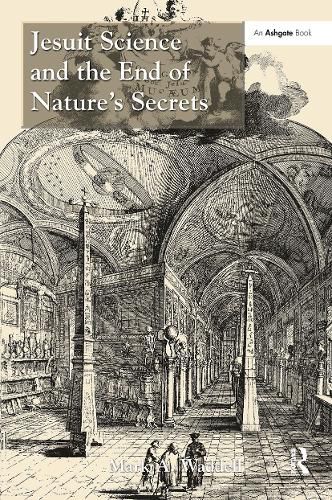Readings Newsletter
Become a Readings Member to make your shopping experience even easier.
Sign in or sign up for free!
You’re not far away from qualifying for FREE standard shipping within Australia
You’ve qualified for FREE standard shipping within Australia
The cart is loading…






Jesuit Science and the End of Nature's Secrets explores how several prominent Jesuit naturalists - including NiccolA (2) Cabeo, Athanasius Kircher, and Gaspar Schott - tackled the problem of occult or insensible causation in the seventeenth century. The search for hidden causes lay at the heart of the early modern study of nature, and included phenomena such as the activity of the magnet, the marvelous powers ascribed to certain animals and plants, and the hidden, destructive forces churning in the depths of the Earth. While this was a project embraced by most early modern naturalists, however, the book demonstrates that the Jesuits were uniquely suited to the study of nature's hidden secrets because of the complex methods of contemplation and meditation enshrined at the core of their spirituality. Divided into six chapters, the work documents how particular Jesuits sought to reveal and expose nature's myriad secrets through an innovative blending of technology, imagery, and experiment. Moving beyond the conventional Aristotelianism mandated by the Society of Jesus, they set forth a vision of the world that made manifest the works of God as Creator, no matter how deeply hidden those works were. The book thus not only presents a narrative that challenges present-day assumptions about the role played by Catholic religious communities in the formation of modern science, but also captures the exuberance and inventiveness of the early modern study of nature.
$9.00 standard shipping within Australia
FREE standard shipping within Australia for orders over $100.00
Express & International shipping calculated at checkout
Jesuit Science and the End of Nature's Secrets explores how several prominent Jesuit naturalists - including NiccolA (2) Cabeo, Athanasius Kircher, and Gaspar Schott - tackled the problem of occult or insensible causation in the seventeenth century. The search for hidden causes lay at the heart of the early modern study of nature, and included phenomena such as the activity of the magnet, the marvelous powers ascribed to certain animals and plants, and the hidden, destructive forces churning in the depths of the Earth. While this was a project embraced by most early modern naturalists, however, the book demonstrates that the Jesuits were uniquely suited to the study of nature's hidden secrets because of the complex methods of contemplation and meditation enshrined at the core of their spirituality. Divided into six chapters, the work documents how particular Jesuits sought to reveal and expose nature's myriad secrets through an innovative blending of technology, imagery, and experiment. Moving beyond the conventional Aristotelianism mandated by the Society of Jesus, they set forth a vision of the world that made manifest the works of God as Creator, no matter how deeply hidden those works were. The book thus not only presents a narrative that challenges present-day assumptions about the role played by Catholic religious communities in the formation of modern science, but also captures the exuberance and inventiveness of the early modern study of nature.